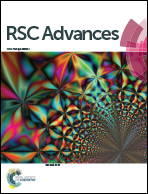Application of dehydroalanine as a building block for the synthesis of selenocysteine-containing peptides†
Abstract
Selenocysteine (Sec), the 21st proteinogenic amino acid, is inserted co-translationally into number of natural proteins. It is coded by a dual function stop codon UGA (opal). It is a redox active amino acid found at the active sites of several enzymes that are involved in oxidation–reduction reactions. These enzymes include the three major mammalian selenoproteins glutathione peroxidase (GPx), thioredoxin reductase (TrxR), and iodothyronine deiodinase (Dio). Although Sec is structurally similar to its sulfur analogue cysteine (Cys), the lower pKa of the selenol group in Sec as compared to that of Cys and the interesting redox properties of the selenium atom in peptides and proteins play crucial roles in redox catalysis. However, the chemical synthesis of Sec-containing peptides has been a difficult task. In this paper, we report on a new method for the synthesis of Sec and Sec-containing peptides using dehydroalanine (Dha) as a building block.



 Please wait while we load your content...
Please wait while we load your content...